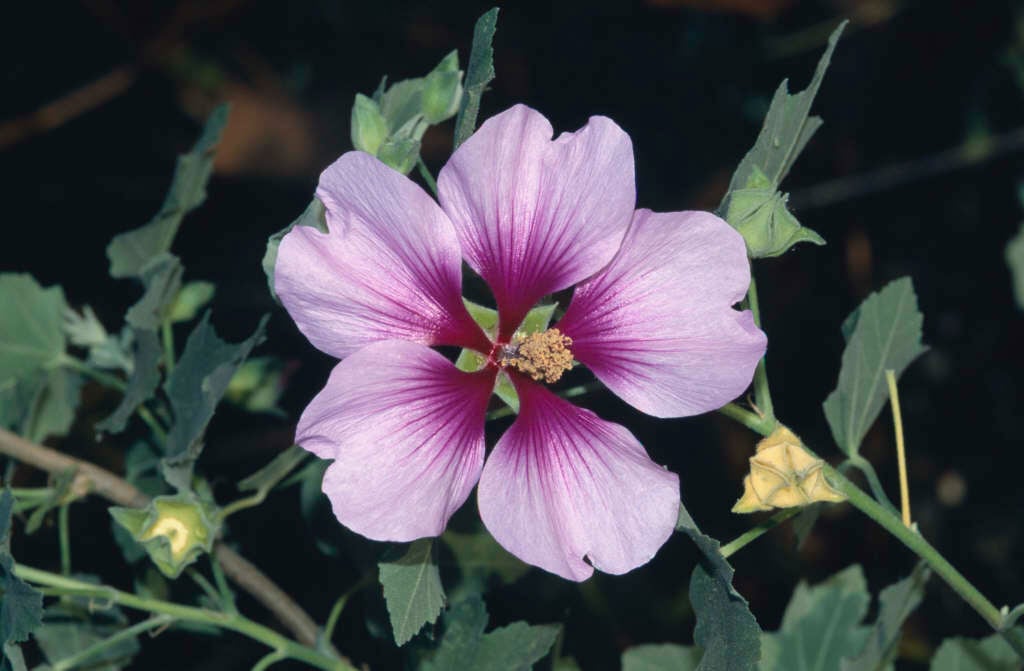Malva subovata

tree mallow
A semi-evergreen subshrub to 1.5m tall, with downy grey-green palmate leaves and stems. Flowers to 7cm in width, pink, lilac-pink or white with purple-magenta veins and eye, produced from late summer to mid autumn
Synonyms
Lavatera 'Maritime'Lavatera maritima
see moreLavatera bicolor
Lavatera maritima bicolor
Malva bicolor
Size
Ultimate height
1–1.5 metresTime to ultimate height
2–5 yearsUltimate spread
0.5–1 metresGrowing conditions
Moisture
Well–drainedpH
Acid, Alkaline, NeutralColour & scent
| Stem | Flower | Foliage | Fruit | |
| Spring | Green Grey Silver | |||
|---|---|---|---|---|
| Summer | Pink Purple | Green Grey Silver | ||
| Autumn | Pink Purple | Green Grey Silver | ||
| Winter | Green Grey Silver |
Position
- Full sun
Aspect
South–facing or East–facing
Exposure
Exposed or Sheltered Hardiness
H3Botanical details
- Family
- Malvaceae
- Native to GB / Ireland
- No
- Foliage
- Semi evergreen
- Habit
- Bushy
- Genus
Malva can be annuals, biennials or perennials, with rounded, often palmately lobed leaves and 5-petalled, open funnel-shaped flowers in the leaf axils or in terminal racemes
- Name status
Correct
- Plant range
- SW Europe, N Africa
How to grow
Cultivation
Grow in well-drained soil in a sheltered, sunny position. In colder areas, may need protection from very low temperatures and excess winter wet. Also suitable for growing in containers that can be overwintered in an unheated greenhouse. Often short-lived
Propagation
Propagate by taking softwood cuttings in spring or by seed sown in spring
Suggested planting locations and garden types
- City and courtyard gardens
- Coastal
- Cottage and informal garden
- Mediterranean climate plants
- Wildlife gardens
- Gravel garden
- Patio and container plants
- Flower borders and beds
- Wall side borders
- Conservatory and greenhouse
Pruning
Pruning group 6, Cut down growth in autumn
Pests
Generally pest-free
Diseases
May be subject to stem rot, soil-borne fungal diseases and a rust
Love gardening
Sign up to receive regular gardening tips, inspiration, offers and more
View our Privacy Policy
Get involved
The Royal Horticultural Society is the UK’s leading gardening charity. We aim to enrich everyone’s life through plants, and make the UK a greener and more beautiful place.

